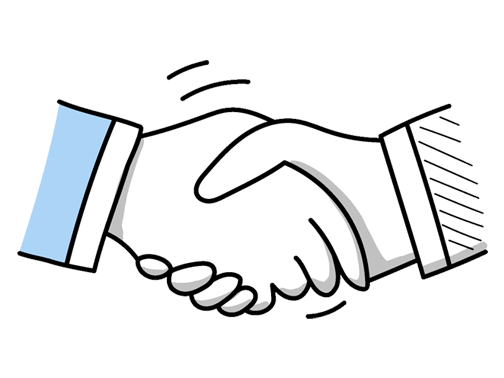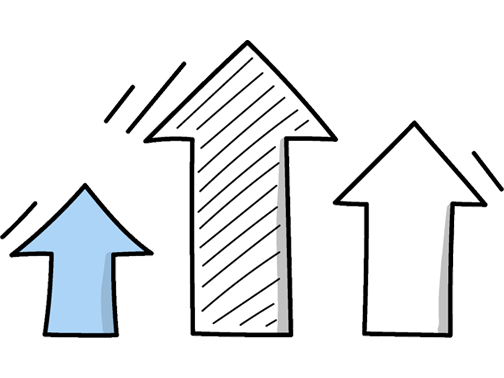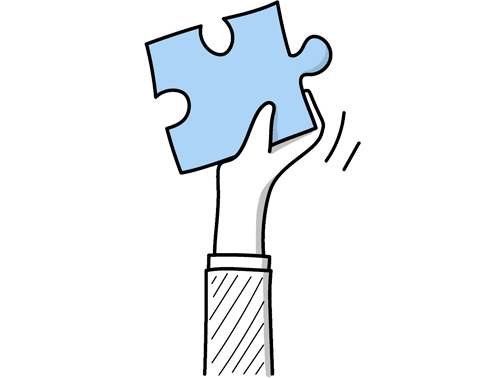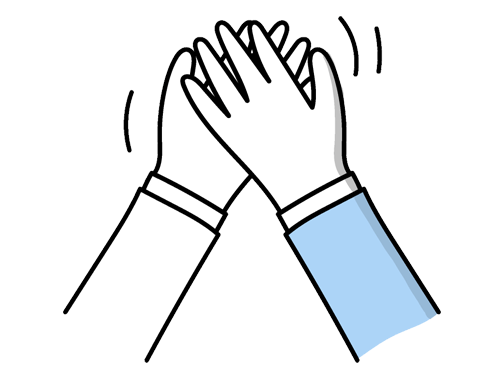Customer Experience Manager Interview Questions (2025 Guide)
Find out common Customer Experience Manager questions, how to answer, and tips for your next job interview
Practice Interviews Online - Identify your strengths and weakness in a realistic Customer Experience Manager mock interview, under 10 minutes
Practice Now »Customer Experience Manager Interview Questions
Questions like this assess your ability to collaborate and drive positive outcomes for customers. You need to explain the team's goal, your role, and the specific actions you took to enhance the customer experience.
Example: In my previous role, our team noticed a drop in customer satisfaction scores. We collaborated to identify key pain points by reviewing feedback and frontline insights. Together, we redesigned the communication process, ensuring quicker responses and clearer information. As a result, customer satisfaction improved noticeably within a few months. It was rewarding to see how teamwork directly enhanced the customer experience.
Questions like this assess your ability to leverage data to enhance customer experiences, showing you can turn information into actionable improvements. In your answer, explain how you gather and analyze customer data, give examples of changes made from those insights, and highlight teamwork in applying data-driven strategies.
Example: I focus on gathering feedback and behaviour data to understand what customers really need. By analyzing patterns, I identify pain points and share these insights with teams to tailor solutions. For example, after noticing long wait times, we adjusted staffing and improved our response system, which boosted satisfaction. Working closely with others ensures the changes we make are practical and truly enhance the customer experience.
Employers ask this question to see how you manage stress and resolve conflicts while maintaining customer satisfaction. You need to explain how you stayed calm, listened carefully, addressed the issue, and ended with a positive result that pleased the customer.
Example: In a previous role, a customer was upset about a delayed delivery. I listened carefully to their concerns without interruption, then calmly explained the cause and offered a realistic timeline. By keeping the conversation focused and showing empathy, I was able to rebuild their trust. They appreciated the transparency and even left positive feedback, turning a frustrating experience into a satisfied outcome.
This interview question helps assess your problem-solving skills and ability to maintain customer satisfaction under pressure. You need to say that you would listen carefully to the customer’s concerns, empathize with their feelings, and work quickly to find a fair solution that meets their needs.
Example: If a customer is unhappy, I’d start by listening carefully to understand their concerns without interrupting. Then, I’d acknowledge their feelings and apologise sincerely for the experience. After that, I’d work with the team to find a practical solution, keeping the customer updated throughout. For example, if a delivery was delayed, I’d arrange a quick replacement and follow up to ensure they’re satisfied. This approach helps rebuild trust and shows we value their experience.
Employers ask this to see how your personal values and customer-focused mindset translate into real results that benefit both the customer and the company. You need to clearly explain a specific situation where prioritizing the customer guided your decisions and led to a successful resolution, showing your problem-solving skills and commitment to excellent service.
Example: In a previous role, I always focused on truly understanding what customers needed rather than just solving the immediate issue. Once, a frustrated client was struggling with our service. By listening carefully and tailoring a solution to their specific situation, I turned their experience around. That moment reinforced for me how patience and empathy aren’t just nice to have—they’re essential in building lasting trust.
Interviewers ask this question to see how you handle pressure and prioritize effectively when multiple urgent customer issues arise simultaneously. You need to explain that you quickly assess the severity and impact of each issue, organize your time and resources to address the most critical ones first, and communicate clearly with customers while delegating tasks when appropriate.
Example: If faced with several urgent customer issues at once, I’d quickly evaluate which ones affect the most customers or have the biggest impact on their experience. I’d then organize my approach to tackle the highest priority first, while keeping the team informed and delegating tasks where possible to maintain momentum. Clear communication ensures everyone’s aligned, and customers feel heard throughout the process.
This question helps the interviewer understand how you track and evaluate your team's impact on customer satisfaction and loyalty. You need to explain that you use specific metrics like customer feedback scores, resolution times, and repeat business to gauge success and continuously improve.
Example: Measuring success comes down to how well customers feel heard and valued. I focus on clear feedback loops, like regular surveys and direct conversations, to gauge satisfaction and spot trends. For example, if we notice rising positive comments about response times, that’s a good sign. It’s also important to track how our team's actions improve these scores over time, ensuring we’re truly enhancing the overall experience.
Interviewers ask this to see how you inspire and lead your team toward high customer service standards. You need to explain how you set clear goals, use incentives to recognize good work, and support your team’s growth through coaching and mentoring.
Example: To keep the team motivated, I start by making sure everyone knows what great service looks like and why it matters. I regularly acknowledge their efforts, whether through a quick thank-you or team shout-outs. I also focus on coaching, helping each person build confidence and tackle challenges together. When the team feels supported and valued, they naturally go the extra mile for our customers.
Questions like this assess your core values and approach to managing customer interactions, showing how you prioritize customer satisfaction and drive your team to excel. You need to explain that your philosophy centers on putting the customer first, empowering your team to deliver exceptional service, solving problems efficiently, and continuously improving through feedback and data.
Example: My approach to customer service centers on truly understanding what the customer values and responding with empathy and clarity. When faced with tough situations, I focus on finding practical solutions that leave the customer feeling heard and valued. I also believe in learning from every interaction, using feedback and data to refine the experience continuously. For example, I once turned a frustrated client’s experience around by promptly addressing their concerns and following up personally.
What they want to know is how you keep your team aligned and informed to avoid misunderstandings and boost productivity. You should say you use clear, consistent communication methods like regular meetings and open channels, and encourage feedback to ensure everyone stays connected.
Example: I focus on keeping communication clear and open by encouraging regular check-ins and creating a space where everyone feels comfortable sharing ideas. For example, I schedule brief daily huddles to align priorities and use collaborative tools to keep information accessible. This approach helps us stay connected, prevents misunderstandings, and ensures the team moves forward together with a shared understanding.
What they want to know is how you prioritize both the company's rules and the customer's needs without compromising either. You need to say that you assess each situation carefully, finding solutions that respect policies while ensuring the customer feels heard and valued.
Example: Balancing company policies with customer satisfaction means understanding the spirit behind the rules and where there’s room for flexibility. I focus on clear communication—explaining policies empathetically while seeking solutions that meet customer needs. For example, if a return policy is strict, I look for ways to accommodate exceptions without bending rules, ensuring customers feel valued and policies remain respected. It’s about finding win-win outcomes.
This question helps interviewers see how you manage criticism and resolve conflicts to improve customer satisfaction. In your answer, explain the situation briefly, show that you listened carefully to the feedback, and describe the steps you took to address the issue and ensure a positive outcome.
Example: Once, a customer was unhappy about a delayed response to their inquiry. I listened carefully, acknowledged the frustration, and apologised sincerely. Then, I explained what went wrong and took immediate steps to resolve their issue. Following up afterwards to ensure satisfaction helped turn their experience around. It was a reminder that empathy and clear communication can really rebuild trust.
Employers ask this question to see if you truly understand what drives customer satisfaction and loyalty while aligning with business goals. In your answer, emphasize that listening to customers is key to meeting their needs consistently, and explain how you use feedback to improve experiences that support the company’s values and objectives.
Example: To me, the heart of great customer experience lies in truly understanding what people need and expect, then consistently delivering on that promise in a way that reflects the company’s values. It’s about creating moments that feel genuine and straightforward—like when a team anticipates a customer’s question before it’s asked, making them feel valued and respected throughout their journey.
Questions like this assess your ability to lead and unify your team around a shared vision for customer service. You need to explain how you communicate your philosophy clearly and regularly reinforce it through training and feedback.
Example: To align my team with our customer service philosophy, I focus on clear communication and shared values. I regularly discuss what excellent service means in our context and encourage feedback to keep everyone engaged. For example, in my last role, we held weekly huddles where team members shared real customer stories, which helped reinforce our commitment and inspired consistent, personalised care.
Hiring managers ask this question to see how you handle underperformance while supporting your team. You need to explain that you would first identify the root cause by talking with the team member, then create a clear improvement plan with measurable goals, and finally monitor progress through regular feedback.
Example: If I noticed a team member struggling with customer service standards, I’d start by having a one-to-one chat to understand any challenges they’re facing. From there, I’d work with them to set clear goals and offer support, maybe through extra coaching or resources. I’d keep checking in regularly to celebrate improvements and address any ongoing issues, ensuring they feel motivated and equipped to succeed.
Interviewers ask this to see if you focus on key indicators that truly reflect customer feelings and business impact. You should mention metrics like Net Promoter Score (NPS) and Customer Satisfaction Score (CSAT), explaining they help gauge loyalty and immediate satisfaction.
Example: When measuring customer satisfaction, I focus on metrics like Net Promoter Score to gauge loyalty, Customer Satisfaction Score to understand immediate feedback, and response times to see how quickly issues are resolved. For example, tracking post-interaction surveys helps identify pain points early. These indicators together provide a clear picture of customer experience and where improvements can make the biggest difference.
Interviewers ask this question to see how you handle challenges and demonstrate commitment to customer satisfaction. You need to describe a clear situation where you noticed a problem, explain the extra steps you took to resolve it, and share the positive result that strengthened the customer relationship.
Example: Certainly. Once, a customer was struggling with our product’s setup late on a Friday. I offered a step-by-step guide over the phone and stayed online until they felt confident using it. This not only resolved their issue quickly but also turned a frustrating moment into a positive experience, which they later mentioned positively in feedback and continued to choose our service.
Hiring managers ask this to see how you handle stress and maintain quality under pressure. You need to describe a specific situation, explain your actions calmly, and highlight the positive outcome you achieved.
Example: In a previous role, we faced unexpected system downtime during peak hours, which left customers frustrated. I calmly coordinated between IT and customer service teams, ensuring clear communication with customers throughout. By prioritising transparency and swift updates, we managed to maintain trust and resolve issues quickly. It was challenging, but staying composed and focused on solutions made all the difference.
Hiring managers ask this question to see how you handle change management and team dynamics during challenges. You should explain that you would communicate the reasons for the policy clearly and empathetically, listen to team concerns through one-on-one conversations, and motivate the team by setting goals and celebrating progress.
Example: If I had to introduce a new policy that wasn’t well-received, I’d start by sharing the reasons behind it openly and with understanding. I’d invite the team to share their concerns, making sure they feel heard. From there, I’d focus on supporting everyone through the change, highlighting how it benefits both our customers and the team. When people see the bigger picture, they’re more likely to get on board.
Questions like this assess your problem-solving skills and your ability to improve customer satisfaction by addressing recurring issues. You need to explain how you would identify the root cause by analyzing customer feedback, develop and implement a coordinated action plan with relevant teams, and monitor the outcomes to ensure the problem is effectively resolved.
Example: If I noticed recurring complaints about a specific issue, I’d start by digging into the data to understand what’s really causing the problem. Then, I’d work with the team to develop a practical plan to fix it, keeping communication open with customers throughout. After implementing changes, I’d keep a close eye on feedback to see if things improve, and be ready to tweak our approach based on what the results show.
What they want to know is how comfortable you are using CRM tools to manage customer relationships effectively. You need to explain which CRM software you've used, how it helped improve customer interactions, and how you leveraged its features to enhance the overall customer experience.
Example: I’ve worked extensively with CRM systems like Salesforce and HubSpot to track customer interactions and personalise their journeys. For example, by analysing data trends, I helped the team tailor communications that boosted satisfaction scores. I find these tools invaluable for understanding customer needs and ensuring follow-ups are timely and relevant, which ultimately strengthens relationships and drives loyalty.
Interviewers ask this to gauge your technical proficiency and how you leverage tools to improve customer interactions. You should mention specific CRM systems, analytics platforms, or communication tools you’ve used, emphasizing how they helped you enhance customer satisfaction.
Example: I’ve worked with CRM platforms like Salesforce to personalise interactions and track customer journeys effectively. Tools such as Zendesk help streamline support, ensuring timely responses. I also use data analytics software to understand customer behaviour and identify pain points. These technologies, combined with a focus on clear communication, really help create a smoother, more engaging experience for customers.
Hiring managers ask this question to see if you can maintain a positive team dynamic and resolve issues effectively. You need to say that you actively listen to all sides, encourage open communication, and work collaboratively to find solutions that benefit the team.
Example: When conflicts arise, I focus on understanding each person’s perspective by listening openly. I encourage calm, honest conversations to find common ground and foster collaboration. In a previous role, this approach helped resolve a misunderstanding between team members quickly, restoring trust and keeping the team focused on our shared goals. It’s about creating space for dialogue and ensuring everyone feels heard and respected.
Questions like this assess your ability to grow and strengthen your team, showing you value continuous learning. You should explain a specific example where you identified a skill gap and took clear steps to help your team improve through training or mentorship.
Example: In my previous role, I identified areas where the team could grow, then organised regular workshops focused on real customer scenarios. Encouraging peer feedback helped us learn from each other, while setting individual goals kept progress on track. For example, after a session on handling challenging calls, we saw quicker resolutions and improved customer satisfaction scores. This approach made skill development part of our daily routine, not just a one-off event.
What they want to understand is how you use customer feedback systems to improve service and collaborate effectively. In your answer, clearly explain how you set up and managed feedback tools, analyzed the data to find key issues, and worked with teams to implement improvements.
Example: In my previous role, I set up a system to gather customer insights through surveys and direct feedback, which helped identify key service issues. I worked closely with support and product teams to turn this feedback into practical improvements, like streamlining our response times. This collaborative approach not only boosted satisfaction scores but also built a culture where customer voices directly influenced how we worked.
Ace your next Customer Experience Manager interview with even more questions and answers
Common Interview Questions To Expect
The interviewer is looking for examples of problem-solving skills, conflict resolution abilities, and how you handle challenges in the workplace. Answers should demonstrate your ability to remain calm under pressure and find effective solutions.
Example: Sure! One challenge I faced was when a customer was unhappy with our service and demanded a refund. I listened to their concerns, apologized for the inconvenience, and offered a solution that met their needs. By staying calm and finding a resolution, I was able to turn a negative situation into a positive experience for the customer.
The interviewer is looking for insight into your decision-making process, your passion for the new career, and how your previous experience can benefit your current role. Be honest, positive, and highlight transferable skills.
Example: I decided to change career paths because I wanted to focus more on directly impacting customer satisfaction and loyalty. My previous experience in sales and marketing has given me a strong foundation in understanding customer needs and preferences, which I can now apply to my role as a Customer Experience Manager. I am excited to use my skills to create positive experiences for customers and drive business growth.
The interviewer is looking for examples of how you manage stress and stay focused under pressure. They want to see your problem-solving skills and ability to handle challenging situations effectively.
Example: I handle pressure by staying organized and prioritizing tasks. I also make sure to take breaks and practice deep breathing to stay calm. Overall, I focus on finding solutions and staying positive during stressful situations.
The interviewer is looking for your commitment to ongoing learning and growth in your field. You can answer by discussing courses, certifications, conferences, or other ways you plan to stay current and improve your skills.
Example: I'm always looking for ways to improve my skills and stay current in the field of customer experience. I plan to attend relevant conferences and workshops, as well as pursue certifications that will enhance my knowledge. Continuous learning is key to staying competitive in this ever-evolving industry.
The interviewer is looking for honesty, accountability, problem-solving skills, and the ability to learn from mistakes. Different ways to answer could include discussing the mistake, the actions taken to rectify it, and the lessons learned for future improvement.
Example: Yes, I once made a mistake in handling a customer complaint by not fully understanding their issue. I took responsibility, apologized to the customer, and worked with my team to find a solution. I learned the importance of active listening and thorough communication to prevent similar mistakes in the future.
Company Research Tips
The company's official website is a goldmine of information. Look for details about the company's history, mission, vision, and values. Pay special attention to the 'About Us', 'Our Team', and 'News' sections. These can provide insights into the company culture, key personnel, and recent developments. For the role of Customer Experience Manager, focus on any information related to customer service, customer experience, or customer relations.
Tip: Look for any specific language or jargon used on the website. Using similar language during your interview can show that you understand the company's culture and industry.
Social media platforms like LinkedIn, Twitter, Facebook, and Instagram can provide valuable insights into the company's culture, events, and how they interact with their customers. LinkedIn can provide information about the company's size, industry, and employee roles. Twitter and Facebook can show you how the company communicates with its customers, which is crucial for a Customer Experience Manager role.
Tip: Follow the company on these platforms to stay updated on their latest news and announcements. Also, look at the comments or reviews from customers to understand their perception of the company.
Understanding the company's competitors can give you a broader view of the industry and the company's position within it. Look at the competitors' websites, their products or services, and how they interact with their customers. This can help you understand what the company's unique selling propositions are and how they differentiate themselves from their competitors.
Tip: Use this information to discuss how you can help enhance the company's competitive advantage in your role as a Customer Experience Manager.
Glassdoor provides insights into the company's culture, salaries, and interview process from the perspective of current and former employees. It can also provide information about the company's strengths and weaknesses. For the role of Customer Experience Manager, look for reviews from employees in similar roles or departments.
Tip: Take the reviews with a grain of salt as they can be biased. However, if you see a consistent pattern, it might indicate a real issue or strength.
What to wear to an Customer Experience Manager interview
- Dark-colored business suit
- White or light-colored shirt
- Conservative tie
- Polished dress shoes
- Minimal jewelry
- Neat, professional hairstyle
- Light makeup for women
- Clean, trimmed fingernails
- No strong perfume or cologne
- Portfolio or briefcase





